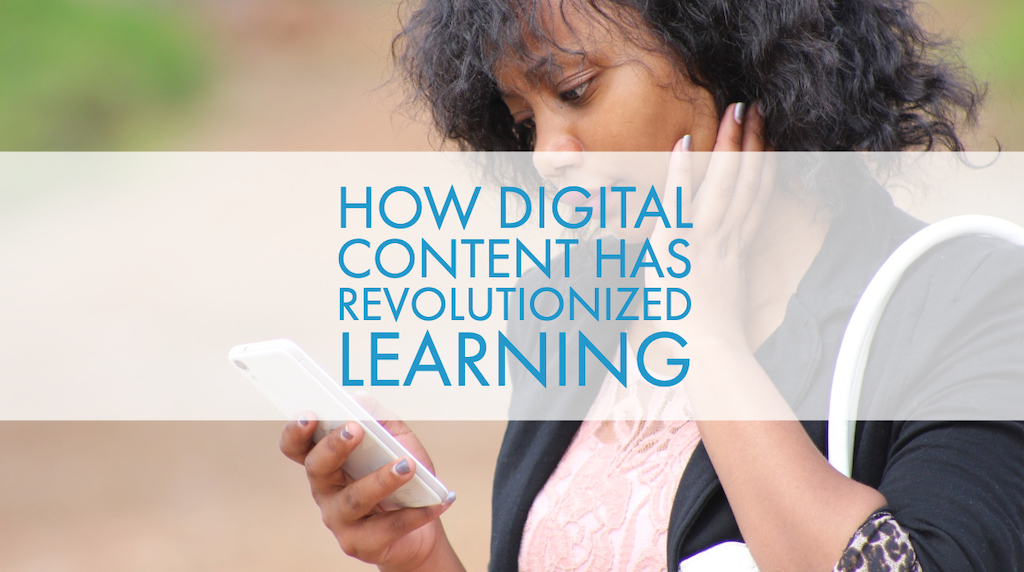When you next walk out your front door, observe the people around you. It’s likely the scene before you will appear quite ordinary. If you time-travelled from 1998 to 2018, however, your reaction would be closer to shock. Styles have changed, and cities have grown, but the startling difference is right in our pockets; screens. Over the past two decades, technology has creeped in to every aspect of our lives. We turn to technology to solve every problem, from writing a research paper to navigation. We also fill the slow moments, waiting for the bus or in line, with more screen time.
The changes are right under our noses, but the effect of such pervasive screen use runs much deeper than we see at first glance. Technology use has changed not only how we problem solve, but how we read, think, and learn. The educational field has quickly adapted to that change through the growth of eLearning…but is it the right choice? Let’s look further.
The Tech-Life Shift: Good or Bad?
Like most revolutions, the tech revolution is neither exclusively positive nor negative. To start, we must examine the pros and cons of technological advances in education.
The Good
Technology has afforded millions of students with opportunities they could barely dream of a decade ago. Students have access to learning material and resources from any device 24/7! Advances in eLearning have made education more accessible for students with dyslexia, vision and hearing impairments, and other conditions that make a traditional classroom setting a challenge. Students with tight schedules can now complete a respected degree 100% online.
One major benefit of eLearning is personalization. Both students and teachers can design a more effective learning path, vs a traditional, one-size fits all method. This is partially due to the newfound “flipped learning” style. Rather than watching lectures at home and completing assignments at home, the lectures can be done virtually. This opens up time during class to ask questions and collaborate with peers, thus maximizing classroom productivity.
Paired with the reporting abilities of eLearning platforms, the potential for deeper learning, more productive classroom interactions, and a highly customizable learning experience is definitely there.
The Not So Good
While the plusses of the tech revolution are vast, the minuses aren’t insignificant. Many students now find reading traditional books taxing. But why?
Printed text, devoid of colorful, hyper-palatable videos and activities, forces readers to mentally “slow down”. When reading a book, we are encouraged to mull over content to analyze our own comprehension. Screens offer a very different experience for a few reasons. When there’s always a “next slide”, “next question”, or “next goal”, readers are pushed to move through content at an increasingly rapid pace. Screens are also home to an entire world of distractions that are nearly impossible to ignore.
For effective learning, this combination can be lethal. Students can fall into the trap of skimming content, spitting back correct answers without digesting the meaning behind them. It’s feasible that our brains themselves could evolve over time, becoming more developed in the areas of visual processing and multi-tasking, but less able to concentrate or think critically.
The Final Verdict
The technological impact on education is indisputable, but the final result depends on how we choose to use that technology. Technology provides an unmatched opportunity for expanded, personalized, and creative learning, but it’s ultimately up to teachers and students themselves whether or not that growth materializes. Schools must speak up about how to navigate technology effectively, guiding students to find a healthy balance.
The role of teacher and student has also begun to evolve. Since resources can be accessed around the clock, teachers are no longer responsible for acting as walking, talking libraries. Instead, they can shift to guiding students through in depth discussions and experiential learning. Students also can take the lead in the direction of their own education, focusing on their own interests and creative ideas. The risks of distraction and misuse are real, but the potential to produce amazing, impactful, and uniquely effective learning experiences continues to outweigh the risks. There’s no question that eLearning opens a world of new educational advances and opportunity. The real question is: what will we make of it?
Optionally, you can rely on us to help you go digital! With its easy-to-use interface, MyEcontentFactory allows you to design, create and push your content to your preferred channels with ease. Give us a shout and we'll get you started today.






Leave a comment